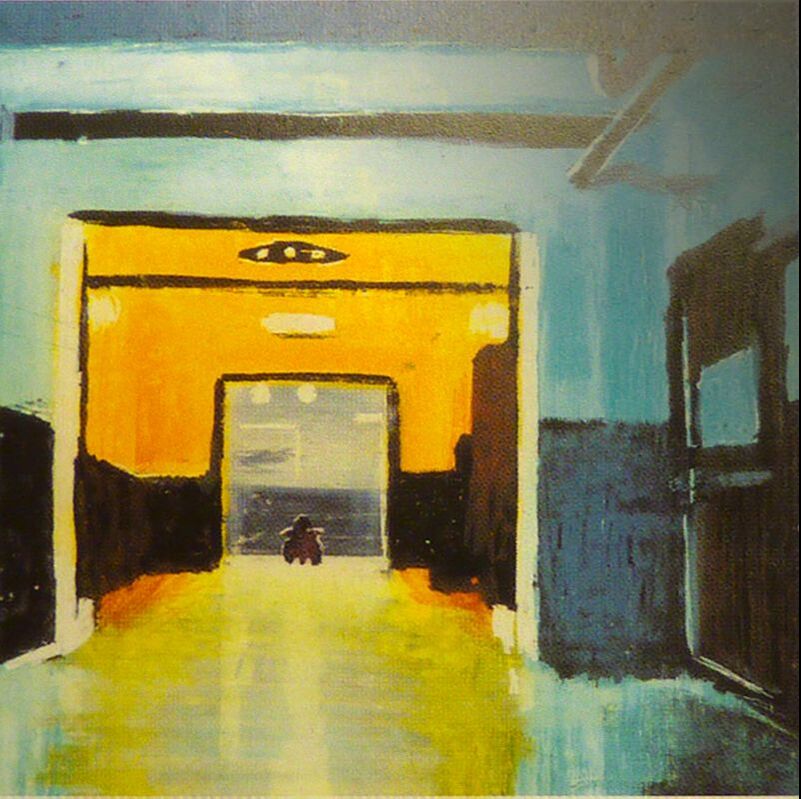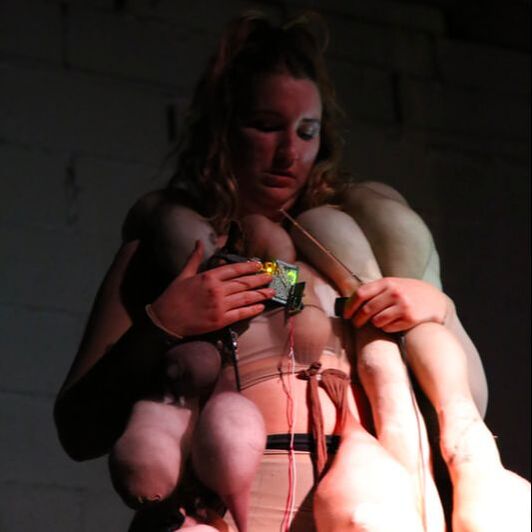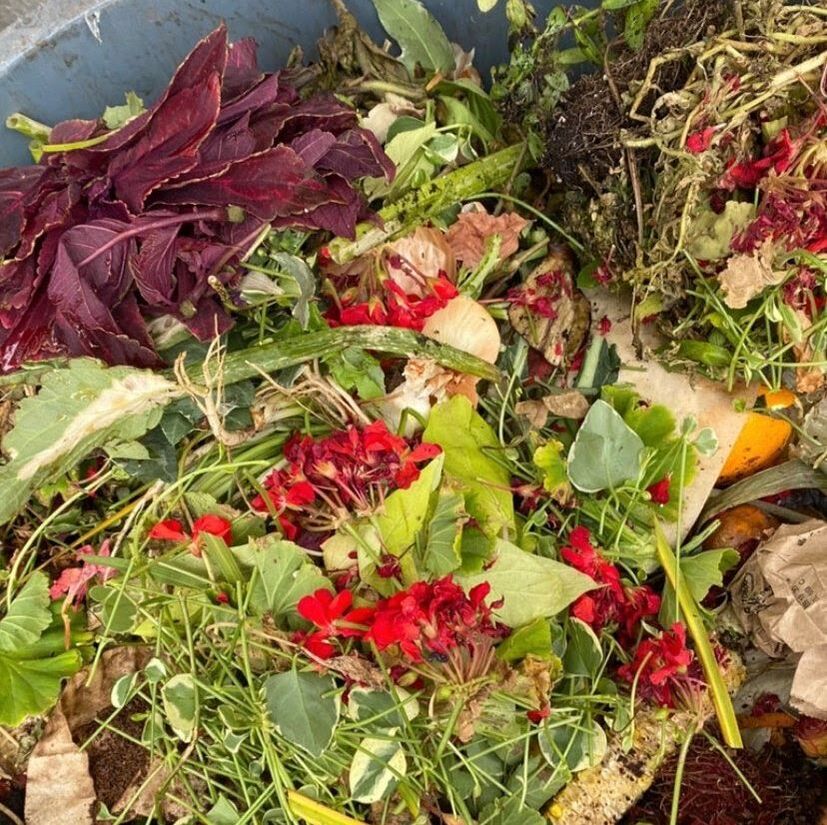The School of Making Thinking offers year round classes designed to bring rigorous thinking and making into conversation with experimental pedagogy.
COLLABORATIVE ATLAS
DESIRE PATHS
Liz Clayton Scofield
Mondays 7-PM EST Cycle 1 : Feb 22 – March 22 |
PERFORMANCE ART
THE HUMAN BODY, INTIMACY, AND TABOO
Vanessa Dion Fletcher & Kate Barry
Wednesdays 7-PM EST Cycle 1 : Feb 24 – March 24 |
HAND-DRAWING COURSE
THE FACE[S]
OF ARCHITECTURE Katarina Andjelkovic
Thursdays 7-9PM EST Cycle 1 : Feb 25 – March 25 |
SONIC SOFT SENSING
Hannah Tardie & Erin Cuana
Mondays 7-PM EST Cycle 2: April 5 – May 3 |
THE COLLABORATION AGREEMENTDESIGNING FOR CREATIVE CONFLICT AND CONSENT
Liz Flyntz & Catalina Alvarez
Wednesdays 7-PM EST Cycle 2: April 7 – May 5 |
DECOMPOSITION CLASS
ROT POETICS AND THE ARTS OF BREAKING DOWN
Alex Tatarsky
Thursdays 7-PM EST Cycle 2: April 8 – May 6 |
INSTRUCTORLiz Clayton Scofield [they/them/their] is a cloud, an orange, and a sonnet, seeking like- minded nebulous accumulations, fruits, and poetic forms to play with across skies, trees, and pages. They are an interdisciplinary artist, writer, wanderer, play advocate, and collaborator currently based in Baltimore, MD. Their creative practice involves a lived performance in collaboration with tiny toy versions of themself, where they explore how to play, how to be a cloud, how to connect with others, how to eat an orange, and how to love, among other things. Their work has been featured in publications including Number, Nashville Arts, Wussy, and Dinner Bell. Exhibitions and performances include Cucalorus Festival, SeedSpace, Fuller Projects, and Noise Gallery. They have been an artist-in-residence with Cucalorus, the School of Making Thinking, Lazuli, and the JHU-MICA Film Centre. They hold an MFA in digital art from Indiana University, Bloomington, and a made-up BA from Vanderbilt University.
|
A COLLABORATIVE ATLAS: DESIRE PATHSA collaborative atlas: Desire Paths is a course in multimedia map-making, exploring radical cartography and personal geographies to consider our histories and our spatial relationships, while imagining possible futures.
Each session will focus on an element of maps. We will explore that element through reading, discussion, and a play-exercise to activate it. The explorations will culminate in the creation of an interactive atlas, with contributions from each participant. The elements include the following: Scale(Context),Legend, Reference Point/Landmark (“Real”/ “Imagined”/ “Virtual”/ “Physical”), Grid(How is space broken down? Organized? Understood?), Omission/Negative Space (What is Left Out)/Power. Maps are living documents, open to interpretation. They can show us what distances separate us and what we can do to grow closer. Together we will create a map through our activities and discussions, to consider and document our own personal boundaries and borders, to visualize our geographies and our future worlds, and to create our own guides, however legible. The nature of the map is conceptually open-ended and not limited to any specific medium. “When individuals make their own maps, they offer an expression of what they consider important, what they consider to be ‘of interest,’ and for what they are willing to fight.” (The Institute for Applied Autonomy) Cycle 1 : Feb 22 – March 22
5 Sessions Mondays 7-9PM EST $150 |
INSTRUCTORVanessa Dion Fletcher is a Lenape and Potawatomi neurodiverse artist. Her family is from Eelūnaapèewii Lahkèewiitt (displaced from Lenapehoking) and European settlers. She employs porcupine quills, Wampum belts, and menstrual cycles to reveal the complexities of what defines a body physically and culturally. Reflecting on an Indigenous feminist body with a neurodiverse mind Dion Fletcher creates art using composite media, primarily working in performance, textiles and video. She graduated from The School of the Art Institute of Chicago in 2016 with an MFA in performance, and York University in 2009 with a Bachelor of Fine Arts.She has exhibited across Canada and the US, at Art Mur Montreal, Eastern Edge Gallery Newfoundland, The Queer Arts Festival Vancouver, Satellite Art show Miami. Her work is in the Indigenous Art Centre, Joan Flasch Artist Book collection, V tape, Seneca College, and the Archives of American Art. Vanessa is a 2020-2021 Jackman Humanities Institute fellow at the University of Toronto.
Kate Barry is an artist, educator and curator with a concentration in performance art. She is currently based on the unceded, traditional territories of the Coast Salish nations in Vancouver,Canada.Barry’s research investigates the performative capacities of the human body through live art,painting and video. She works through themes of subjectivity, queerness, and feminist ancestry focusing on the subject/object binary.Her works have been performed or exhibited in galleries and festivals throughout Canada and internationally, including the National Gallery of Canada, Vancouver Art Gallery, 7a*11d Festival of Performance Art (Toronto, Canada), Galerie SAW Gallery (Ottawa, Canada), LINK & PIN Performance Art Series (Montreal), World Pride (Toronto), Zero Gravity International Festival of Performance Art (Edmonton, Canada), Open Space Gallery (Victoria, Canada), VIVO Media Art |
PERFORMANCE ART:
|
INSTRUCTORKatarina Andjelkovic, with a Ph.D., M.Arch.Eng., is a theorist, practicing architect, researcher and a painter. She is a founder of Atelier AG Andjelkovic (2013-), with teaching experience as a Visiting Professor at University of Oklahoma- Chair of Creative Architecture, Institute of Form Theory and History and Institute of Urbanism and Landscape in Oslo, University of Belgrade.She lectures and gives workshops across Europe, America and Canada. Katarina has won numerous awards for her architecture design and urban design competitions and published two scientific monographs. She is a full author of the Preliminary Architectural Design of the National project supported by the Government of the Republic of Serbia; published her research widely in international journals and lectured in: Italy, Slovakia, Spain, United Kingdom,USA, Canada, Austria, Germany, Ireland, Norway, Portugal, Croatia, Romania, Serbia and Turkey(Web of Science). Andjelkovic won the Belgrade Chamber of Commerce Award for Best MasterThesis defended at Universities in Serbia in all disciplines. Katarina exhibited her artwork atmany international architectural, fine arts and photography exhibitions, including groupexhibitions at Pall Mall Gallery in London, Royal Hibernian Academy in Dublin, MAAT Museumin Lisbon, International Biennial of Illustration in Belgrade, TU Delft in the Netherlands, theMuseum of Applied Arts in Belgrade, the National Museum in Belgrade, etc. To learn more,please visit here.
|
HAND DRAWING COURSE: THE FACE[S] OF ARCHITECTURE
Architecture drawings have become highly precise in an artificial manner, eliminating the actual suggestive and evocative power of architectural hand-drawings. They explicitly demonstrate that recent works lack ways to emulate our human perception and a creative pursuit in exploring space.
Although architecture communicates with static narratives, it has many faces and its appearance to the eye and mind changes in time. Every room is a stage. Searching to rationalize at least a portion of reality through the manifestation of a multiplicity of architectural faces, we ask how many drawings it takes to reconstruct one scene? By creating several visual versions of the same scene, students are in the process of restaging the given reality: the claustrophobic face, the traumatic face, the sublime face, the vinyl face, the concrete face, the anthropocentric face. Taking one face and one room each week, students develop their abilities to perceive the reality with a new pair of eyes. We deal with the spatial representations from film and architectural drawings to discuss and experiment the creative dialogues that are established across architecture, film, and visual arts. The goal of this workshop-based course is to explore ways of enriching the cross-disciplinary dialogues and to cultivate a strong relationship between theory and practice. As an outcome, students will develop a deep understanding of architectural drawing as a subject, practice, as a medium in exploring space, and as a domain in which they can contribute. Cycle 1 : Feb 25 – March 25
5 Sessions Thursdays 7-9PM EST $150 |
INSTRUCTORS
Hannah Tardie is a sculptor, performer, and scholar who was born in Orange,California. She recently completed a graduate degree in electronic arts from New York University, where she was awarded the Red Burns Scholarship and a Tisch School of the Arts scholarship. She has been accepted to residencies like ChaNorth and CritNYC. Tardie’s work uses ritual to examine intimacy and gender within histories ofelectronics engineering, fabrication, and waste. She currently lives and works in Maine,teaching electronics and new media at the university level.
Erin Cuana, or Nire, is an interdisciplinary artist from Queens, NY, working in music/sound, performance, video and new media. She’s interested in blurring artistic practice, knowledge-sharing spaces and performance. She’s a recent graduate of NYU’s Tisch program,with a masters in electronic arts, where she explored relations of humans and nonhumans:organic and machinic, via an animist and mystical lens. She is a recipient of the Red BurnsScholarship, a SUNY Purchase Art+Design scholarship and a participant of the Red Bull MusicAcademy. Her work can be seen in: Dazed Magazine, NPR, Fader, Interview Magazine andXLR8R. She also works in the healing realm facilitating breathwork, therapeutic sound, and reiki sessions. |
SONIC SOFT SENSING
This workshop uses handmade sensors as an experimental medium through which we can explore electronic music. Participants will learn how to make a sensor out of fiber and other soft materials which they can use to engage with electronic music. We will assign short readings for class discussion, and we will critically consider our physical and energetic relationship to sensors, instruments, and our expectations of interfaces and sonic output. The sessions will also include hands-on instruction and experimentation--with the earlier sessions giving attention to technical details about sensors, Arduino, and Max/MSP, and the later sessions giving attention to exploration of the medium and mini-performances/sharings. Overall, Sonic Soft-Sensing looks to celebrate the messiness, unruliness, and imperfection of soft handmade electronics as a starting place for sonic experimentation and electro-magic. We will be using Zoom for this class.
Cycle 2 : April 5 – May 3
5 Sessions Mondays 7-9PM EST $150 |
INSTRUCTORS
Liz Flyntz is an artist, curator, writer, and digital experience designer. She works with archives and digital tools to develop exhibitions, performances, multimedia projects, software and websites. Her work uses contemporary tools and systems thinking to explore time, governance, economics, communication, idealism, and futility. She’s written extensively about early media art for publications including Afterimage, Intercourse, and The Creators Project. In 2016 she co-curated The Present Is the Form of All Life, an exhibition of the time capsule works of Ant Farm and their successor group LST at Pioneer Works. She’s spoken about art/science collaboration, media art history, and experience design at ISEA, the College Art Association Conference, NYU, MICA, and RISD. As one half of the bio-art duo Epicurean Endocrinology, Liz uses collaborative performance art and installations to investigate the practices and conventions of science and cooking and explore gender constructions and endocrine disruptors in the built environment. As a member of the Ant Farm Art Building Creative Preservation Initiative (AFAAB) she contributes archival research, presentation design, and audience engagement.
Catalina Alvarez is a Colombian-American film director and interdisciplinary artist. Her films have screened at festivals including Slamdance, Fantastic Fest (Best Picture, Shorts with Legs), New Orleans and Palm Springs, and venues such as the Wexner Center for the Arts (Jury Award, Ohio Shorts), the ICA Philadelphia, the San Diego Art Institute, the Museum of the Moving Image (Best Emerging Filmmaker, Queens World Film Festival) and Arclight Hollywood (Best of Slamdance). She is a recipient of Fellowships from the Virginia Center for the Creative Arts, the Wexner Center for the Arts, Flux Factory and the Robert Flaherty Film Seminar. Alvarez received her MFA from Temple University after initially studying film directing at the self-organized film school, FilmArche, e.V., in Berlin. She is currently an Assistant Professor of Media Arts at Antioch College in Yellow Springs, Ohio. |
THE COLLABORATION AGREEMENT: DESIGNING FOR CREATIVE CONFLICT AND CONSENTTo some degree, all creative works are collaborative. No individual completes a creative project without input, criticism, influence, assistance, or engagement with others. But creative projects are often wrenched away from their collaborative roots when it comes time for funding, professionalizing, and historicising.
When collaborations go right, they use all the collaborator’s talents and experiences, becoming more than the sum of their parts. When they go wrong, relationships and artworks can be destroyed, and the cracks often appear along the fault lines of historic bias and discrimination. This class is designed for those who are or might be in creative collaboration. Together, we will look at examples of successful and disastrous creative collaboration: from FOOD (a restaurant project often ascribed to Gordon Matta-Clark, but actually a group effort by Clark, Tina Giraroud, and Carol Gooden) to the still-stonewalled recordings of The Theater of Eternal Music (held by La Monte Young, but created by a group that included Tony Conrad, Terry Riley, Billy Name and John Cale, amongst others) as well as artist duos in which one subsumes the other such as Genesis P Orrige and Lady Jaye and Christo and Jean-Claude. We will read and discuss texts such as Gregory Sholette’s Collectivism After Modernism: Art and Social Imagination after 1945 and Dark Matter: Art and Politics in the Age of Enterprise Culture; Claire Bishop’s The Social Turn: Collaboration and Its Discontents; and Artificial Hells: Participatory Art and the Politics of Spectatorship.During the class we’ll invite guests such as Chip Lord (member of Ant Farm/LST) and Igor Vamos (member of Yes Men) to discuss collaborative projects and practices. Finally, each member of the class will complete The Collaboration Agreement, either with a classmate or with outside collaborators. The Collaboration Agreement is a questionnaire/contract that is designed to lead participants through the process of discussing shared goals, ethics, and guidelines, as well as determining where potential sites of conflict or disagreement might lie. Cycle 2 : April 7 – May 5
5 Sessions Wednesdays 7-9PM EST $150 |
INSTRUCTORS
Tatarsky makes performances at the unfortunate in-between zone of performance art, comedy, dance-theater and deluded rant — sometimes with songs. Venues include La Mama ETC, MoMA PS1, New Museum, PSNY, The Kitchen, Howl!, Gibney, Skirball, Judson Church and many bars. Writings on spambot lyricism, bootleg t-shirt poetry, and miming as an anti-capitalist gesture can be found in The New Inquiry, Hypocrite Reader, ArtReview Asia, Garlands, Spike, and Folder. Interests include identity construction, humor & the abyss, self-loathing, meaninglessness, parades, and compost. Basically, how words and worlds come together and fall apart. They seek the logic of the clown as an antidote to despair and a model of one who keeps trying despite (repeated) failure. @tartar.biz
|
DECOMPOSITION CLASS: ROT PRACTICE AND THE ARTS OF BREAKING DOWNDecomposition Class will embrace compost as metaphor and method. Classes will alternate between the nuts and bolts science of decay, readings on rot as strategy, and experiments in decomposing writings and performances, drawing inspiration from a roster of rotten scientists and artists. This is a group experiment in moving between theory and practice, using close observation of rot as inspiration for generative making.
Each student will over the course of the five weeks develop both 1) an experimental compost practice AND 2) an experimental composition practice. We will talk and think about how these different modes of making and unmaking inform one another. Classes may include guided free writing and improvisations, brief lectures, a rotten reader of accompanying texts, group discussions, analysis of dirt, and sharing of projects. Both compose and compost mean, literally, to put together, mix, construct. The class structure itself will follow this impulse: mixing different elements to lay fertile ground for new and surprising growths, emergences, patterns, and possibilities. We will hope to nourish root systems that allow for ever-branching ruminations. Cycle 2 : Week of April 8 – May 6
5 Sessions Thursdays 7-9PM EST $150 |






